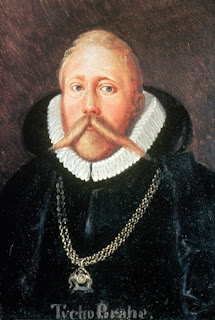(1) Lake Baikal (Siberia)
Lake Baikal, is the world's oldest and deepest lake; it is the second most voluminous lake, after the Caspian Sea; and it is the most voluminous freshwater lake in the world, with an average depth of 744.4 m (2,442 ft). Lake Baikal contains a total of roughly 20% of the world's surface fresh water. Located in the south of the Russian region of Siberia (between Irkutsk Oblast to the northwest and the Buryat Republic to the southeast, near the city of Irkutsk), the body of water is also known as the "Pearl of Siberia".
At 1,642 metres (5,387 ft) (Baikal central part 53°14′59″N 108°05′11″E / 53.24972°N 108.08639°E / 53.24972; 108.08639), Lake Baikal is the deepest, and among the clearest of all lakes in the world. At more than 25 million years old, Baikal is also the world's oldest lake. Like Lake Tanganyika, Lake Baikal was formed as an ancient rift valley, having the typical long crescent shape with a surface area of 31,722 km2/12,248 sq mi, less than that of Lake Superior or Lake Victoria. Baikal is home to more than 1,700 species of plants and animals, two thirds of which can be found nowhere else in the world and was declared a UNESCO World Heritage Site in 1996. It is also home to Buryat tribes who reside on the eastern side of Lake Baikal, rearing goats, camels, cattle and sheep, where the regional temperature varies from a minimum of −19 °C (−2.2 °F) in winter to maximum of 14 °C (57 °F) in summer.
(2) Lake Tanganyika (Congo)
Lake Tanganyika is the second largest freshwater lake and second deepest after Lake Baikal in Siberia, is also the world's longest lake. The lake is located between four countries - Burundi, Democratic Republic of Congo (DRC), Tanzania and Zambia, the DRC (45%) and Tanzania (41%). Lake Tanganyika is the deepest freshwater lake in Africa and the second in the world with a maximum depth of 1470 meters (4823 ft).
(3) Caspian Sea (Azerbaijan, Iran, Kazakhstan, Russia, Turkmenistan)
The Caspian Sea is the largest enclosed body of water on Earth by area, variously classed as the world's largest lake or a full-fledged sea. The sea has a surface area of 371,000 km2 (143,200 sq mi) (Not including Garabogazköl Aylagy) and a volume of 78,200 km3 (18,800 cu mi). It is in an endorheic basin (it has no outflows) and is bounded by northern Iran, southern Russia, western Kazakhstan and Turkmenistan, and eastern Azerbaijan.
The ancient inhabitants of its littoral perceived the Caspian as an ocean, probably because of its saltiness and seeming boundlessness. It has a salinity of approximately 1.2%, about a third the salinity of most seawater. Caspian is called Qazvin on ancient maps.
(4) Lake Vostok (Antarctica)
Lake Vostok is the largest of more than 140 subglacial lakes found under the surface of Antarctica. It is located beneath Russia's Vostok Station, 4,000 metres (13,000 ft) under the surface of the central Antarctic ice sheet. It is 250 kilometres (160 mi) long by 50 kilometres (31 mi) wide at its widest point, thus similar in size to Lake Ontario, and is divided into two deep basins by a ridge.
The water over the ridge is about 200 metres (660 ft), compared to roughly 400 metres (1,300 ft) deep in the northern basin and 800 metres (2,600 ft) deep in the southern. Lake Vostok covers an area of 15,690 square kilometres (6,060 sq mi). It has an estimated volume of 5,400 cubic kilometres (1,300 cu mi) and consists of fresh water. The average depth is 344 metres (1,129 ft). In May 2005 an island was found in the center of the lake.
(5) Lake O'Higgins / San Martín (Argentina)
The lake known as O'Higgins in Chile and San Martín in Argentina, is located around coordinates 48°50′S 72°36′W / 48.833°S 72.6°W / -48.833; -72.6 in the Patagonia, between the Aysén Region and the Santa Cruz Province. Its surface is of 1,058 km² at 250 metres above mean sea level, and has a shoreline length of 525 km. The lake is the deepest in the Americas with a maximum depth of 836 metres near O'Higgins Glacier, and its characteristic milky light-blue color comes from rock flour suspended in its waters. It's mainly fed by the Mayer River and other streams, and its outlet Pascua River discharges water from the lake towards the Pacific Ocean at a rate of 510 m³/s.
The Southern Patagonian Ice Sheet extend from the lake for 330 kilometres to the Viedma Lake and Argentino Lake. The O'Higgins Glacier flows eastwards towards the lake, as does the Chico Glacier. The most common tourist path visiting the lake is that between El Chaltén in Argentina and Villa O'Higgins in Chile, including a ferry through the lake on the Chilean side.
(6) Lake Malawi (Africa)
Lake Malawi, is an African Great Lake and the southmost lake in the Great Rift Valley system of East Africa. This lake, the third largest in Africa, is located between Malawi, Mozambique, and Tanzania. It is the second deepest lake in Africa, though its placid northern shore gives no hint of its depth. This great lake's tropical waters reportedly are the habitat of more species of fish than that of any other body of water on the Earth.
Lake Malawi or Lake Nyaza is between 560 and 580 kilometres long, and about 75 kilometres wide at its widest point. The total surface area of this lake is about 29,600 square kilometres (11,429 square miles). This lake has shorelines on western Mozambique, eastern Malawi, and southern Tanzania. The largest river flowing into this lake is the Ruhuhu River. This large freshwater lake has an outlet, which is the Shire River, a tributary that flows into the very large Zambezi River.
Lake Malawi lies in the Great Rift Valley that was formed by the opening of the East African Rift, where the African tectonic plate is being split into two pieces. This is called a divergent plate tectonics boundary. Lake Malawi or Nyaza itself is variously estimated at about 40,000 years old or about one to two million years.
(7) Lake Issyk Kul (Kyrgyzstan)
Issyk Kul is an endorheic lake in the northern Tian Shan mountains in eastern Kyrgyzstan. It is the tenth largest lake in the world by volume and the second largest saline lake after the Caspian Sea. Although it is surrounded by snow-capped peaks, it never freezes hence its name, which means "hot lake" in the Kyrgyz language. The lake is a Ramsar site of globally significant biodiversity (Ramsar Site RDB Code 2KG001) and forms part of the Issyk-Kul Biosphere Reserve. It is also the site of an ancient metropolis 2500 years ago, and archaeological excavations are ongoing.
Lake Issyk Kul has a length of 182 kilometers (113 mi), a width of up to 60 kilometers (37 mi), and covers an area of 6,236 square kilometers (2,407.7 sq mi). This makes it the second largest mountain lake in the world behind Lake Titicaca in South America. Located at an altitude of 1,607 meters (5,272 ft), it reaches 668 meters (2,192 ft) in depth.
(8) Lake Crater Caldera (Oregon - USA)
Crater Lake is a caldera lake located in the south-central region of the U.S. state of Oregon. It is the main feature of Crater Lake National Park and famous for its deep blue color and water clarity. The lake partly fills a nearly 2,148 foot (655 m) deep caldera that was formed around 7,700 (± 150) years ago by the collapse of the volcano Mount Mazama.
On June 12, 1853, John Wesley Hillman was reportedly the first European American to see what he named "Deep Blue Lake" in Oregon. The lake was renamed at least three times, as Blue Lake, Lake Majesty, and finally Crater Lake.
Crater Lake is known for the "Old Man of the Lake", a full-sized tree which is now a stump that has been bobbing vertically in the lake for more than a century. Due to the cold water, the tree has been rather well preserved.
While having no indigenous fish population, the lake was stocked from 1888 to 1941 with a variety of fish. Several species have formed self sustaining populations.
The lake is 5 by 6 miles (8 by 10 km) across with an average depth of 1,148 feet (350 m). Its maximum depth has been measured at 1,949 feet (594 m), which fluctuates slightly as the weather changes. This makes Crater Lake the deepest lake in the United States, the second deepest lake in North America.
(9) Great Slave Lake (Canada)
Great Slave Lake is the second-largest lake in the Northwest Territories of Canada (behind Great Bear Lake), the deepest lake in North America at 614 m (2,014 ft), and the ninth-largest lake in the world. It is 480 km (300 mi) long and 19 to 109 km (12 to 68 mi) wide. It covers an area of 27,200 km2 (10,502 sq mi) in the southern part of the territory. Its volume is 2,090 km3 (500 cu mi). The lake shares its name with the Slavey North American Indians. Towns around the lake include: Yellowknife, Fort Providence, Hay River and Fort Resolution. The only community in the East Arm is Lutselk'e, a hamlet of about 350 people, largely Chipewyan aboriginals of the Dene Nation.
First Nations peoples were the first settlers around the lake, building communities including Dettah, which still exists today. British fur trader Samuel Hearne explored the area in 1771 and crossed the frozen lake, which he initially named Lake Athapuscow (after an erroneous French speaker's pronunciation of Athabaska).
In the 1930s, gold was discovered there, which led to the establishment of Yellowknife, which would become the capital of the NWT. In 1967, an all-season highway was built around the lake, originally an extension of the Mackenzie Highway but now known as Yellowknife Highway or Highway 3.
(10) Lake Matano (South Sulawesi - Indonesian)
Matano Lake is a lake in South Sulawesi, precisely located at the southern tip of Sulawesi island in the town of Sorowako. This lake has a depth as far as 600 meters, 382 meters of them above sea level. Lake Matano is not a formation of some tributaries, but are formed from thousands of springs so that it never experienced drought and the water was very clear.
Lake Matano is home to many species of endemic fish and other animals as well as many plants. The endemic fishes of Matano have been compared to that of the species swarms of the Rift Valley Lakes of Africa. While not as diverse, they are thought to have all arisen from a single ancestor species and diversified into numerous different species, which now fill many of the previously vacant ecological niches.

























































 Source
Source